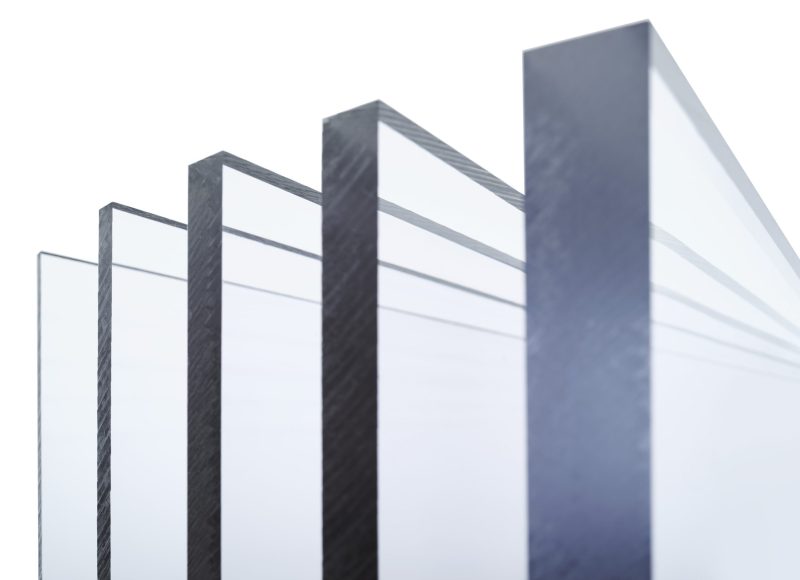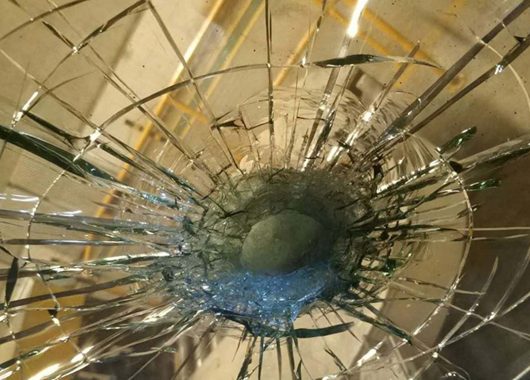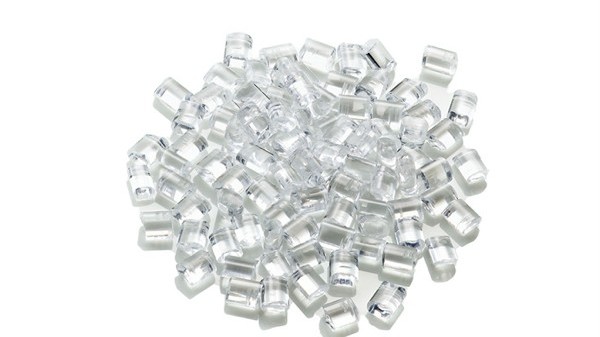Coating your polycarbonate sheets holds significant importance, not only for enhancing durability but also for unlocking potential energy savings. Studies indicate that polycarbonate sheets can lead to a remarkable 35% reduction in energy consumption compared to glass exterior glazing.
Now, envision the possibilities when these polycarbonate sheets are further fortified with heat-resistant coatings.
1. Uncoated Polycarbonate Sheets
At the foundational level, uncoated polycarbonate sheets offer transparency and a lightweight composition. Devoid of additional protective layers, these sheets maintain optical clarity and facilitate the passage of natural light. Despite their simplicity, uncoated sheets find application in scenarios where uncompromised visibility is paramount.
2. UV-Resistant Coated Polycarbonate Sheets
Designed as a shield against the relentless sun, UV-resistant coatings become a safeguard for polycarbonate sheets. This coating mitigates the risk of yellowing caused by prolonged exposure to ultraviolet radiation. Tailored for outdoor applications, UV-resistant coated sheets provide longevity in the face of harsh environmental conditions.
3. Scratch-Resistant Coated Polycarbonate Sheets
Elevating durability, scratch-resistant coated polycarbonate sheets are fortified against the daily grind. This coating acts as a barrier, reducing the impact of routine wear and tear. Ideal for high-traffic areas or applications prone to abrasion, these sheets maintain their integrity and visual clarity over extended periods.
4. Anti-Reflective Coated Polycarbonate Sheets
A solution to minimize unwanted glare, anti-reflective coatings enhance visibility by curbing reflections. Applied to polycarbonate sheets, this coating finds relevance in settings where glare can impede functionality, such as display panels or outdoor signage. The result is improved visual comfort and clarity.
5. Heat-Resistant Coated Polycarbonate Sheets
Fortifying against elevated temperatures, heat-resistant coatings empower polycarbonate sheets to withstand heat-intensive environments. This variant proves invaluable for applications like greenhouses or roofing in regions characterized by intense sunlight. The heat-resistant coating ensures the longevity and sustained performance of polycarbonate sheets under challenging thermal conditions.
At the core of the appeal of polycarbonate sheets lies their innate durability. Engineered to withstand the rigors of time and environmental challenges, these sheets exhibit a robustness that ensures longevity and structural integrity. Their resistance to weathering and external pressures makes them a resilient choice for construction materials, capable of enduring diverse climates without succumbing to deterioration. Builders can rely on the enduring nature of polycarbonate sheets, resulting in structures that stand the test of time with minimal maintenance.
One of the standout features of polycarbonate sheets is their exceptional impact resistance. This characteristic provides a reliable shield against accidental impacts or potential damage, making them invaluable in applications where protection against external forces is crucial. Whether used in architectural glazing, safety barriers, or protective panels, the impact-resistant nature of polycarbonate sheets enhances safety and minimizes the risk of damage, contributing to their versatility in various construction scenarios.
Safety is a paramount consideration in construction, and polycarbonate sheets contribute to this aspect through their inherent fire-resistant properties. This aspect adds an extra layer of protection in environments where fire safety is of utmost concern. The ability of polycarbonate sheets to withstand and resist fire makes them a prudent choice for applications where adherence to stringent safety standards is imperative, providing peace of mind to builders and occupants alike.
A compelling advantage of polycarbonate sheets is their ability to facilitate the entry of natural light into interior spaces. This not only reduces the dependency on artificial lighting during daylight hours but also creates well-lit and inviting environments. The diffusion of natural light through these sheets contributes to energy efficiency, creating spaces that are not only aesthetic but also environmentally conscious.
In public spaces, the resistance of polycarbonate sheets to vandalism stands out as a notable advantage. Their robustness and durability act as a deterrent to malicious activities, contributing to the overall safety and longevity of architectural installations. This vandal-proof quality enhances the reliability of polycarbonate sheets in applications where security is a concern, ensuring the sustained integrity of structures in high-traffic or public areas.
The anti-static nature of polycarbonate sheets addresses a specific concern in environments with sensitive electronic equipment. By minimizing the risk of static electricity buildup, these sheets contribute to the protection of electronic components from potential damage caused by static discharge. This makes them a prudent choice in settings where the presence of static-sensitive equipment is prevalent, adding an extra layer of reliability to their overall utility.
A crucial advantage in outdoor applications is the resistance of polycarbonate sheets to ultraviolet rays. Prolonged exposure to sunlight can often lead to material degradation, but polycarbonate sheets withstand this challenge. This resistance ensures that the optical and structural properties of the sheets remain intact over time, making them a dependable choice for applications where exposure to UV radiation is inevitable.
Despite the undeniable benefits that polycarbonate sheets bring to construction and design, it is important to highlight their drawbacks. It is important for anyone to consider these drawbacks before making a decision for your project. While these sheets offer versatility, durability, and an array of other advantages, they are not without their problems. At the same time, shedding light on potential issues that may impact their suitability for particular projects. We thought understanding the drawbacks and complexities of polycarbonate sheets would help you make an informed decision.
One notable drawback of polycarbonate sheets is their susceptibility to scratches. Despite efforts to incorporate scratch-resistant coatings, these sheets may still exhibit visible marks over time, particularly in high-traffic areas or environments where abrasive contact is likely. This aspect necessitates careful handling and maintenance to preserve the aesthetic integrity of the sheets.
Polycarbonate sheets are prone to unwanted expansion and contraction, especially in response to temperature variations. This inherent characteristic can lead to issues such as warping or distortion, impacting the dimensional stability of the sheets. It becomes crucial to consider these thermal dynamics during installation to prevent potential structural concerns.
While possessing some fire-resistant qualities, polycarbonate sheets are not entirely immune to combustibility. In situations where fire safety is a critical concern, alternative materials with higher fire resistance may be preferable. It is essential to assess the specific fire safety requirements of the intended application before choosing polycarbonate sheets.
A significant consideration is the relatively higher cost associated with polycarbonate sheets compared to alternative materials. The initial investment required for these sheets may pose a financial challenge for some projects. Builders and project managers must weigh the advantages against the cost implications to make informed decisions regarding the suitability of polycarbonate sheets for a particular application.
Despite resistance to ultraviolet rays, polycarbonate sheets are not entirely impervious to UV degradation. Prolonged exposure to intense sunlight may lead to a gradual loss of optical clarity and surface degradation over time. This aspect necessitates regular maintenance and, in some cases, the application of UV-protective coatings to mitigate the effects of UV radiation.
Polycarbonate sheets may exhibit limited resistance to certain chemicals, making them susceptible to damage in environments with aggressive chemical exposure. It is crucial to assess the compatibility of polycarbonate sheets with specific chemicals present in the intended application to avoid degradation or compromise of the material.
The production of polycarbonate sheets involves the use of raw materials and energy-intensive processes, contributing to their environmental footprint. Additionally, the disposal of polycarbonate sheets at the end of their lifecycle poses environmental challenges. The overall environmental impact of these sheets should be considered in the context of sustainable and eco-friendly construction practices.
End-of-life disposal presents a notable challenge with polycarbonate sheets. The recycling of these sheets can be complex due to the mix of materials used in their production. Disposal challenges highlight the importance of responsible waste management practices and the exploration of alternative materials with more straightforward recycling processes.
Addressing the challenges posed by polycarbonate sheets requires practical solutions that improve their functionality and mitigate potential issues. In examining these problems, it becomes evident that thoughtful approaches can be employed to overcome drawbacks. Here, we delve into practical ways to solve the problems associated with polycarbonate sheets.
Solution 1. Scratch Resistance Solutions
Implementing protective measures becomes crucial to counteract the susceptibility of polycarbonate sheets to scratches. Utilizing additional scratch-resistant coatings or laminates offers a practical solution, creating a resilient barrier against daily wear and tear. Regular maintenance practices, such as gentle cleaning with recommended materials, contribute to prolonging the aesthetic integrity of the sheets.
Solution 2. Managing Unwanted Expansion and Contraction
Controlling the unwanted expansion and contraction of polycarbonate sheets necessitates strategic installation methods. Incorporating expansion joints and allowing for thermal expansion during installation helps mitigate the risk of warping or distortion. By adhering to recommended installation guidelines, builders can enhance the dimensional stability of polycarbonate sheets in varying temperature conditions.
Solution 3. Fire Safety Measures
While polycarbonate sheets exhibit some fire-resistant properties, supplementing their fire safety can be achieved through complementary measures. Integrating fire-resistant barriers or using flame-retardant treatments enhances the overall fire safety of structures incorporating polycarbonate sheets. This proactive approach aligns with stringent safety standards and minimizes potential combustibility concerns.
Solution 4. Cost-Effective Strategies
Addressing the higher cost of polycarbonate sheets involves exploring cost-effective alternatives or optimizing their usage. Conducting a comprehensive cost-benefit analysis allows builders to assess the overall value offered by polycarbonate sheets in specific applications. Exploring bulk purchasing options or negotiating with suppliers can further contribute to cost optimization without compromising on quality.
Solution 5. UV Protection Solutions
Applying UV-protective coatings or films emerges as an effective solution to counteract UV degradation. Regular inspections and maintenance routines can help identify signs of UV damage early on, allowing for timely intervention. By incorporating UV-resistant treatments, the longevity of polycarbonate sheets is extended, maintaining their optical clarity and structural integrity over an extended period.
Solution 6. Chemical Compatibility Measures
Mitigating the impact of chemical exposure involves selecting polycarbonate sheets with enhanced chemical resistance or exploring alternative materials for applications with aggressive chemical environments. Conducting thorough compatibility assessments between the sheets and specific chemicals present in the surroundings helps prevent potential damage and ensures the long-term durability of the material.
Solution 7. Sustainable Practices for Environmental Impact
To address environmental concerns associated with polycarbonate sheets, adopting sustainable practices becomes imperative. Exploring eco-friendly alternatives, optimizing production processes to reduce resource consumption, and promoting responsible waste management contribute to minimizing the overall environmental impact of using polycarbonate sheets in construction projects.
Solution 8. Responsible Disposal Strategies
Managing the end-of-life disposal challenges requires implementing responsible disposal strategies. Exploring recycling programs or collaborating with recycling facilities capable of handling polycarbonate sheets ensures a more environmentally conscious approach. Builders and project managers can actively contribute to reducing the environmental footprint by incorporating responsible disposal practices into the lifecycle of polycarbonate sheets.
Compared to its alternative options, polycarbonate sheets stand out as a convenient choice for various applications. While acknowledging their few drawbacks, it’s essential to recognize that these issues are repairable, offering a practical solution. The numerous advantages of polycarbonate sheets make them a versatile material across different domains, ensuring their widespread utilization in diverse applications.
Polycarbonate sheets find extensive use in construction and architectural glazing due to their versatility and ease of installation. These sheets serve as effective alternatives to traditional materials, offering a lightweight yet durable solution. Their ability to let in natural light and withstand impact makes them suitable for applications such as skylights, canopies, and transparent roofing systems.
In signage and display panels, polycarbonate sheets offer a clear and durable material for creating impactful visuals. The anti-reflective coated variants enhance visibility, minimizing unwanted glare. Their lightweight nature facilitates easy installation, making them a good choice for a range of applications, from retail displays to informational signage.
Within the transportation industry, polycarbonate sheets find application in vehicle components such as windows, windshields, and headlight covers. Their lightweight nature contributes to fuel efficiency, and their impact resistance ensures safety on the road. Polycarbonate sheets offer a practical solution for enhancing visibility and protecting passengers and drivers.
In the electronic and technology sector, the anti-static nature of polycarbonate sheets becomes significant. These sheets serve as protective enclosures for sensitive electronic equipment, mitigating the risk of static discharge. Their durability and resistance to impact make them a reliable choice for safeguarding valuable electronic components.
In the medical and healthcare sector, polycarbonate sheets offer a hygienic and durable material for various applications. From protective barriers in medical facilities to equipment enclosures, their impact resistance and ease of cleaning contribute to maintaining a safe and sterile environment.
When considering the use of polycarbonate sheets for your project, it’s crucial to weigh various factors to ensure they line with your specific needs and requirements. Here is a generic outline of key considerations to keep in mind when choosing polycarbonate sheets, helping you make informed decisions for a successful and efficient application.
Determine the specific application for which you intend to use polycarbonate sheets. Whether it’s for construction, signage, protective barriers, or other purposes, understanding the unique demands of your application will guide the selection process. Different applications may require specific features, such as UV resistance, impact resistance, or optical clarity, ensuring that the chosen polycarbonate sheets align seamlessly with your project’s goals.
The thickness of polycarbonate sheets directly influences their strength and durability. Assess the level of strength required for your application by considering factors like load-bearing capacity and potential impact. Thicker sheets generally offer greater robustness, making them suitable for applications where structural strength is crucial. Evaluate the thickness options available and choose accordingly based on your project’s specific requirements.
Explore the variety of coating options available for polycarbonate sheets. These coatings serve specific purposes, such as UV resistance, scratch resistance, or anti-reflective properties. Assess the environmental conditions and potential wear and tear in your application to determine the most suitable coatings. Understanding the available options allows you to enhance the overall performance and longevity of the polycarbonate sheets.



